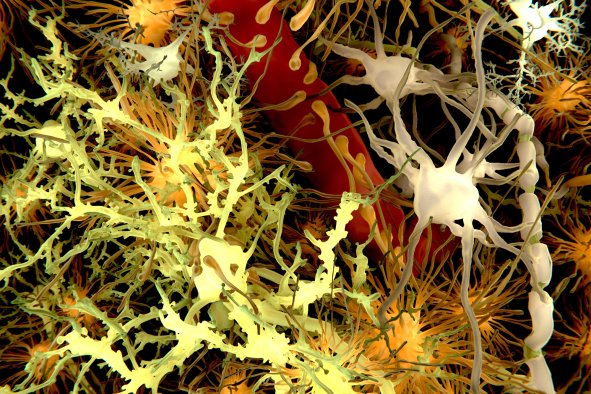Time-restricted eating may encourage weight loss—from fat, rather than muscle—and better blood sugar control in people at risk of Type 2 diabetes, according to a new study.
A version of intermittent fasting, time-restricted eating (TRE) is a dietary pattern whereby people can only eat for a certain portion of each day and fast for the rest.
Scientists tested TRE on people with metabolic syndrome, which means they are at risk of Type 2 diabetes and heart disease because they suffer from some of the following risk factors: obesity, poor blood sugar control, high blood pressure or concerning cholesterol levels.
In the U.S., 11.6 percent of the population have Type 2 diabetes, and approximately 38 percent have prediabetes, according to the Centers for Disease Control and Prevention. Heart disease is the leading cause of death worldwide.
"Patients with metabolic syndrome or prediabetes represent a third of the U.S. population and have few treatment options to prevent progression to Type 2 diabetes," study co-author Dr. Pam Taub, cardiologist at the University of California, San Diego, told Newsweek.
"These patients are high risk for developing Type 2 diabetes and future cardiovascular disease."
She said in a statement: "Our research demonstrates that intervening with a lifestyle intervention like time-restricted eating at this important time point for patients with metabolic syndrome or prediabetes can have a meaningful impact on the trajectory of their overall health and reduce risk of future Type 2 diabetes."
People who practice time-restricted eating have a late breakfast and early dinner—or skip one of those meals entirely—so their nighttime period of not-eating is extended, and their digestive system can rest.
In this study, 108 participants were split into two groups: half received nutritional recommendations and were advised to continue their normal eating patterns; the other half received the same recommendations, but were only allowed to eat within a window of eight to 10 hours each day.
"Humans are not designed to eat food around the clock, and it is important to give our bodies a period of metabolic rest, just like we need an adequate amount of sleep to be able perform well," Taub told Newsweek.
"In the U.S., the average eating window is 14 hours, and many people are eating food until they sleep.
"TRE may not be for everyone—e.g. there are no studies in patients with Type 1 diabetes—but I recommend [that] all my patients avoid late night eating."
The scientists found that the group following a TRE plan lost more weight and saw better improvements to their blood sugar levels, compared with the group that maintained normal eating patterns.
The differences were modest, but significant, the scientists said. For instance, fasting glucose levels—measured as hemoglobin A1c, one of the ways doctors assess how well someone processes sugar, used to detect prediabetes and diabetes—were 0.1 percent lower in the TRE group, on average.
"This is the same amount that was achieved in the Diabetes Prevention Program which led to a 58 percent decrease in the incidence of Type 2 diabetes 2.8 years later," said Taub.
The TRE group also lost more weight than the non-TRE group, including 5.4 percent more total weight and 3.5 percent more abdominal fat, while not losing muscle—which can often happen when people lose weight quickly.
"Metabolic syndrome is a combination of cardiovascular risk factors and there is no one treatment to cure it," Taub told Newsweek. "We found that TRE was safe, even for participants on common medications such as metformin and statins, and provided benefits to multiple aspects of this complex syndrome."
In a statement, study co-author Professor Satchidananda Panda, of The Salk Institute for Biological Studies, explained why TRE is thought to work.
"Our bodies actually process sugars and fats very differently depending on the time of day," he said. "In time-restricted eating, we are re-engaging the body's natural wisdom and harnessing its daily circadian rhythms to restore metabolism and improve health."
The study was a collaboration between researchers at the University of California, San Diego, and The Salk Institute. It was published in scientific journal Annals of Internal Medicine on September 30.
Do you have a tip on a food story that Newsweek should be covering? Is there a nutrition concern that's worrying you? Let us know via science@newsweek.com. We can ask experts for advice, and your story could be featured in Newsweek.
Reference
Manoogian, E. N. C., Wilkinson, M. J., O'Neal, M., Laing, K., Nguyen, J., Van, D., Rosander, A., Pazargadi, A., Gutierrez, N. R., Fleischer, J. G., Golshan, S., Panda, S., Taub, P. R. (2024). Time-Restricted Eating in Adults With Metabolic Syndrome, Annals of Internal Medicine 177(11). https://doi.org/10.7326/M24-0859
Disclaimer: The copyright of this article belongs to the original author. Reposting this article is solely for the purpose of information dissemination and does not constitute any investment advice. If there is any infringement, please contact us immediately. We will make corrections or deletions as necessary. Thank you.



